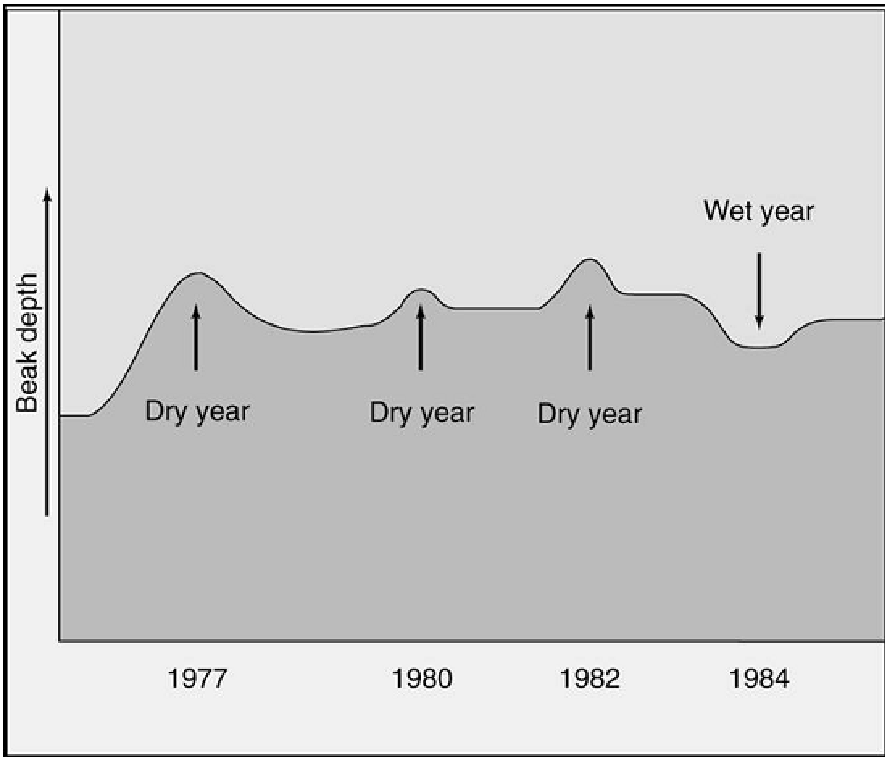Refer to the accompanying figure. A population that produces a large number of offspring, but the offspring must
survive independently, would be represented by the curve labeled:a.
A
b. B
c. C
d. either A or B.
e. either A, B, or C.
a
You might also like to view...
The nucleolus is the site of:
A. protein synthesis. B. uncoiling and unraveling of chromosomes. C. ribosome assembly. D. lipid synthesis. E. chromosome replication.
The pattern of wet years and dry years shown will probably move the population toward

A. all having larger beaks.
B. all having smaller beaks.
C. having intermediate size beaks.
D. having two, distinct populations.
E. maintaining abundant variation in beak depth.
Clarify Question
What is the key concept addressed by the question?
What type of thinking is required?
Gather Content
What do you already know about natural selection? What other information is related to the question?
Choose Answer
Given what you now know, what information is most likely to produce the correct answer?
Reflect on Process
Did your problem-solving process lead you to the correct answer? If not, where did the process break down or lead you astray? How can you revise your approach to produce a more desirable result?
Human triploid and tetraploid fetuses occur, but they are inviable and undergo spontaneous abortion. Any of the following events could produce a polyploid fetus EXCEPT:
A. defective spindle apparatus during early mitosis. B. failure of homologous chromosome separation. C. fertilization of an egg by more than one sperm. D. chromosome duplication without cell division. E. development of an unfertilized ovum.
Bronchial washing collected with a double lumen–plugged catheter is:
a. acceptable. b. not acceptable.